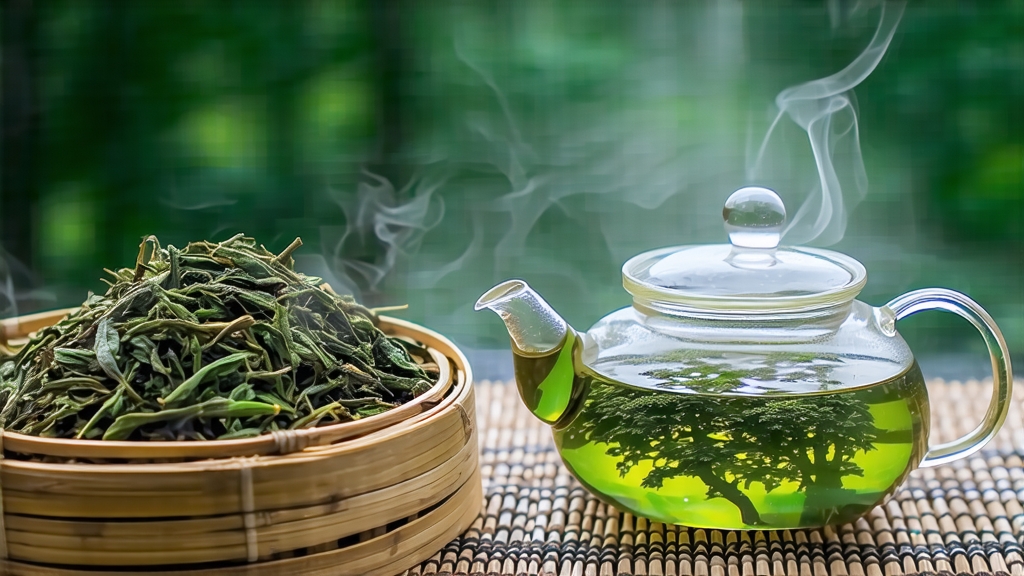
Among the pantheon of Chinese green teas, few names evoke as much poetry and precision as Biluochun. Literally “Green Snail Spring,” the tea is prized for its tiny spiral-shaped leaves, early harvest, and an intoxicating fragrance that tea scholars describe as a marriage of orchid, peach, and deep ocean mist. To the uninitiated, it may appear almost too delicate—mere slivers of jade that hardly seem capable of delivering flavor—yet one sip reveals why Qing-dynasty Emperor Kangxi reportedly abandoned his travel itinerary when he first tasted it near Lake Tai in 1699, declaring it a tribute tea on the spot.
Historical records trace Biluochun’s pedigree to the Dongting mountain range of Jiangsu province, a lacework of limestone peaks cupping the vast Taihu (Lake Tai). Monks in the Ming dynasty cultivated tea on these mist-curtained slopes as early as the 14th century, but the cultivar gained imperial fame only after Kangxi’s endorsement. Folklore adds color: a tea picker, startled by the sudden reek of a dying wild beast, stuffed her half-filled basket with fresh leaves to mask the odor; the compressed spirals, warmed by body heat, exuded an unprecedented perfume that drifted down the mountain and seduced the imperial entourage camped below. Whether apocryphal or not, the story captures the sensory shock that still defines Biluochun today.
Botanically, the tea belongs to the small-leaf Camellia sinensis var. sinensis, ideally the “Xiao Ye” clone indigenous to Dongting’s Dongshan and Xishan peninsulas. The microclimate—frequent fog, moderate 16 °C annual temperature, sandy loam rich in magnesium and manganese—forces slow growth, concentrating amino acids such as L-theanine while keeping catechins in balance. The result is a sweet, umami-laden liquor with none of the rasping astringency that plagues lesser green teas. Within the official nomenclature, seven grades exist, from Supreme (Special Grade) down to Grade III, but connoisseurs further split Supreme into “Seven-Centimeter” and “Five-Centimeter” sub-tiers based on the length of the finished budset. True Seven-Centimeter Biluochun contains one bud plus an unfurling leaf no longer than 0.7 cm, plucked within a five-day window straddling the Qingming festival.
Plucking begins at 5 a.m., when dew still beads the leaves, acting as a natural protective film against mechanical bruising. Pickers wear bamboo hats rather than gloves to avoid trapping heat; every 90 minutes the harvest is delivered to the village workshop where the leaves are spread on sieved bamboo trays for a brief two-hour withering. Unlike oolong or black tea, green tea aims to halt oxidation immediately, so the critical step is shaqing—“killing the green.” In Biluochun’s case, this is performed in a shallow, 80-cm copper pan heated to 180 °C by fruit-wood embers. A master tea maker tosses 250 g of leaves with a wrist motion that resembles calligraphy: vertical lifts to drive off steam, horizontal presses to shape the curl, and final spiral strokes that coil the bud into its signature snail shell. The entire firing lasts seven minutes, during which moisture plummets from 75 % to 30 %. Leaves are then transferred to a second pan at 70 °C for a further twenty minutes of rolling and drying, reducing moisture to 6 %. No machinery touches the tea; even the final sorting is done by elderly women who pick out broken tips with tweezers under north-facing skylights to avoid color distortion.
Because the leaves are so compact, Biluochun rewards a gentle, glass-based infusion that allows foreigners to watch the “dance of the snails.” Begin with 3 g of tea—about a level teaspoon—for every 150 ml of water cooled to 75 °C. Pour along the wall of the glass to avoid scorching the buds, then pause for thirty seconds while the spirals hydrate and sink. The first infusion should be decanted within 50 seconds; subsequent steeps may be lengthened by ten-second increments. A gaiwan works equally well, but always pre-warm it with a rinse of hot water to prevent thermal shock that can flatten the aromatics. Avoid covered